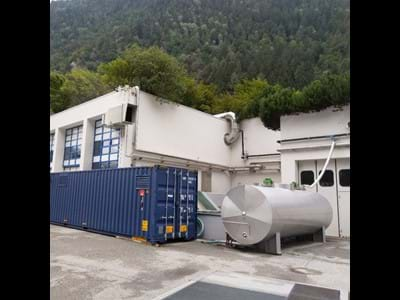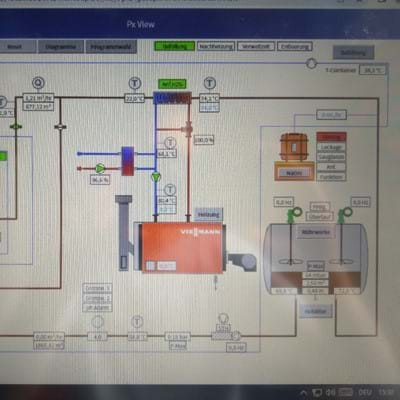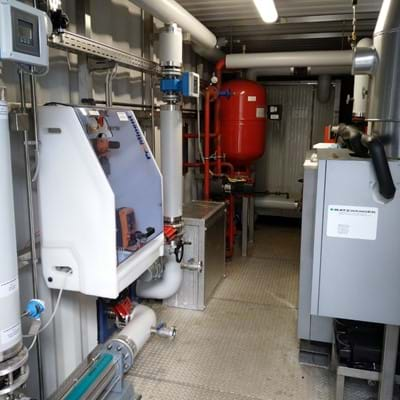The experimental plant
A mobile pilot plant for the pretreatment of the excess sludge was planned by the partner company
Atzwanger AG and STUGA KG, a partner company. The technical-university support was provided by BioTreaT GmbH, a spin-off company of the University of Innsbruck. The plant was designed in such a way that for medium-sized wastewater treatment plants (up to max.100,000 EWCSB120) the entire thickened excess sludge can be pre-treated. The plant is used after
completion on wastewater treatment plants with foaming problems or plants with unsatisfactory biogas production or digested sludge dewatering. During the study period, all relevant operating parameters of the wastewater treatment plant are recorded and the foaming behavior is closely observed or analyzed. In addition, biogas production and sludge dewatering are monitored.


